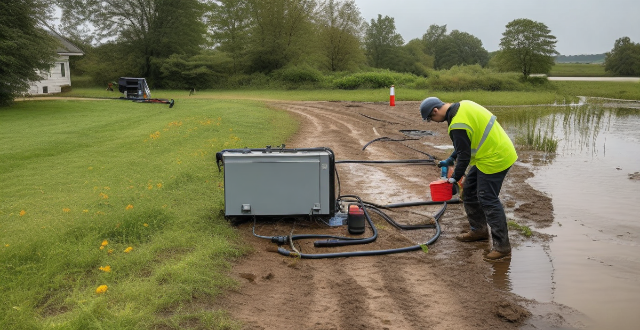Effective strategies for tracking and managing water consumption include understanding your water bill, installing a water meter, using smart monitoring devices, categorizing usage, fixing leaks promptly, upgrading to water-efficient appliances, optimizing daily activities, and setting conservation goals.

How to Effectively Track and Manage Your Water Usage
Introduction
Water is a precious resource, and managing your water usage efficiently can help you conserve this resource and also save on your utility bills. Here are some effective strategies to track and manage your water consumption:
Understanding Your Water Bill
- Review Your Bill Regularly: Start by regularly reviewing your water bill. It provides valuable information about your consumption patterns.
- Check for Leaks: Unusual spikes in your bill could indicate leaks. Address these promptly to avoid wastage.
Tracking Your Usage
- Install a Water Meter: If you don't already have one, consider installing a water meter that can provide real-time data about your usage.
- Use Smart Water Monitoring Devices: There are various smart devices available that connect to your smartphone, allowing you to monitor your water usage remotely.
- Readings at Specific Intervals: Take manual readings from your water meter at regular intervals (e.g., weekly or monthly) to identify trends and high-usage periods.
Analyzing Consumption
- Categorize Usage: Break down your water usage into categories like gardening, cleaning, cooking, etc., to understand where most of your water is being used.
- Benchmark Against Averages: Compare your usage to local averages to see if you are using more or less than your neighbors.
Implementing Water-Saving Practices
- Fix Leaks Promptly: Even small drips can add up over time. Ensure all faucets and pipes are leak-free.
- Upgrade to Water-Efficient Appliances: Consider replacing old appliances with water-efficient models, such as low-flow toilets and showerheads.
- Optimize Daily Activities: Simple actions like taking shorter showers, turning off the tap while brushing teeth, and using a dishwasher or washing machine only when full can significantly reduce water usage.
- Landscaping Choices: Choose plants that require less water and implement efficient irrigation systems for your garden.
Monitoring and Adjusting
- Regular Check-ins: Continue to monitor your water usage regularly, making adjustments as necessary based on your analysis.
- Set Goals: Set water conservation goals for yourself and your household, and track progress toward these goals over time.
Conclusion
By understanding your water consumption patterns, employing smart tracking technologies, implementing water-saving practices, and consistently monitoring your usage, you can effectively manage your water usage. This not only helps in conserving water but also in reducing your utility expenses. Remember, every drop counts!